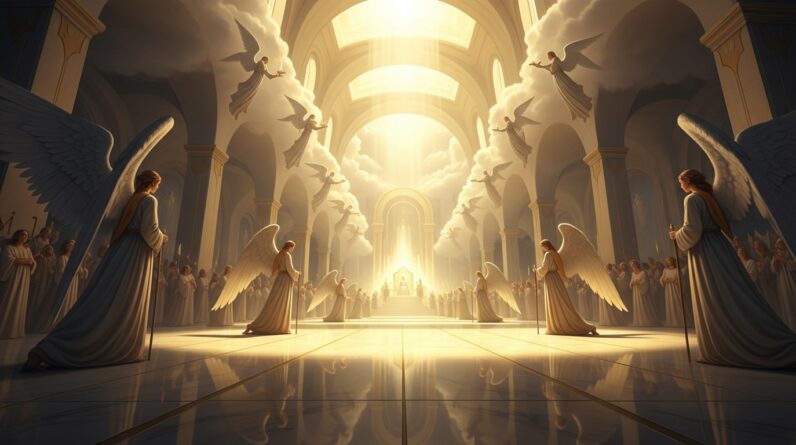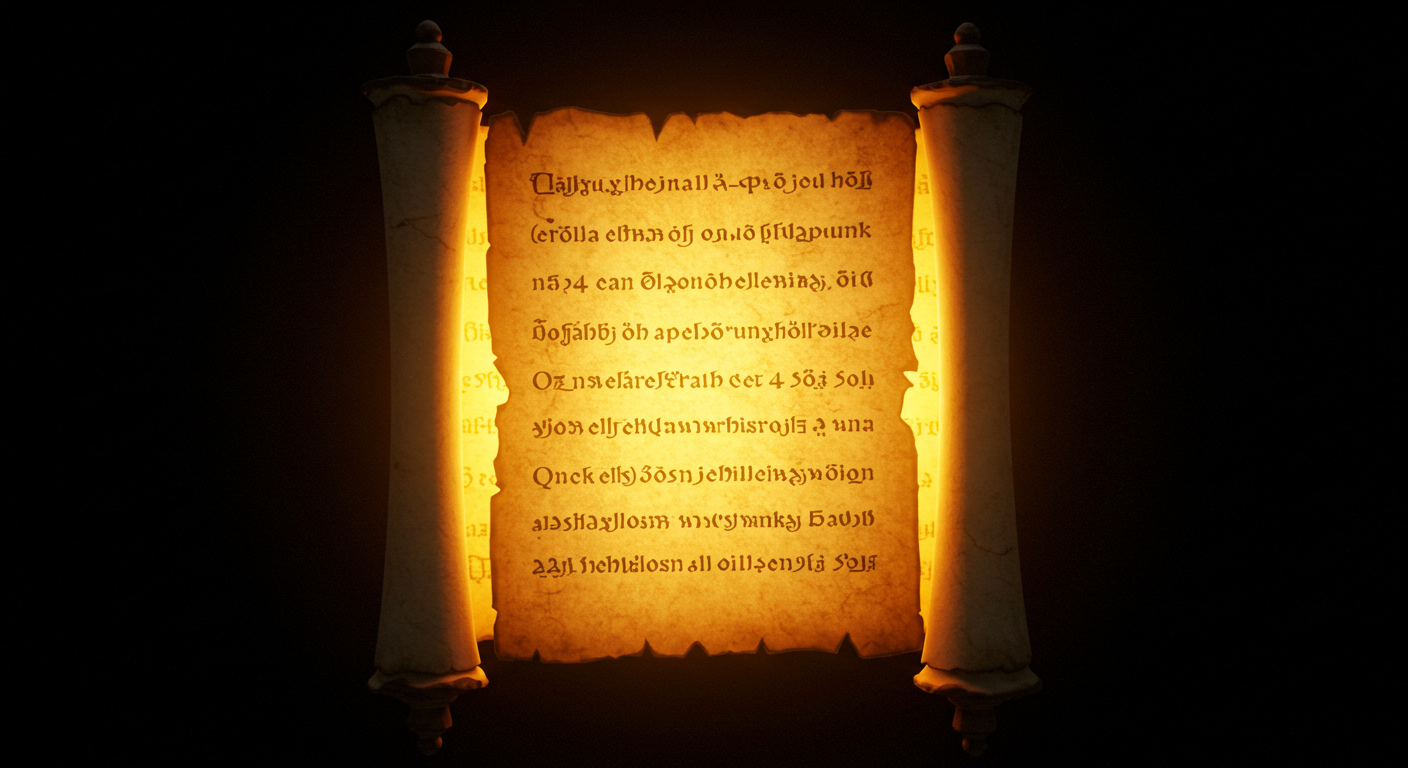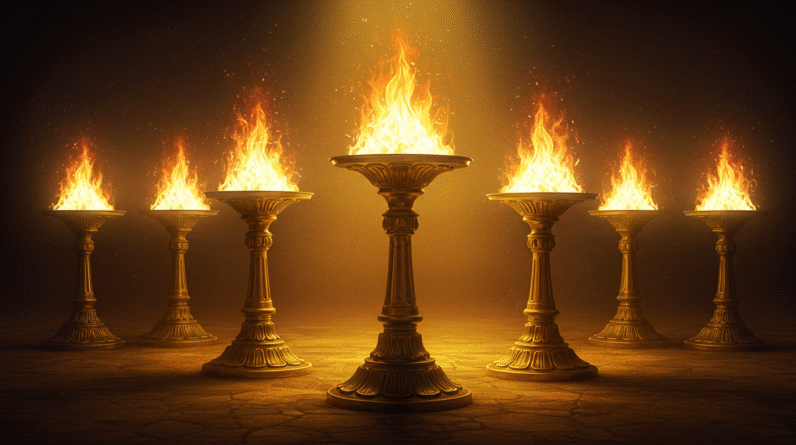Dive into the profound symbolism of Revelation 16’s Seven Bowls of Wrath. This exploration reveals divine justice and offers insight into personal transformation.
The Seven Bowls of Wrath: Understanding the Depths of Revelation 16
Introduction
Have you ever felt drawn to the mysteries of biblical prophecy, where each verse seems to carry an ocean of speculation, interpretation, and thrilling fear? If so, Revelation 16, with its vivid imagery and ominous predictions, is both intriguing and perplexing. Contained within this chapter are the Seven Bowls of Wrath—enigmatic symbols of divine judgment, rich with profound lessons. You might find yourself wondering, what do these portrayals mean for you, for the world, or for any seeker of truth?
This article will help you navigate the complexities of this compelling chapter while providing a fresh perspective. We’ll explore how the Seven Bowls of Wrath reveal the profound nature of divine justice.
Bible Reference
📖 Key Verse:
“Then I heard a loud voice from the temple saying to the seven angels, ‘Go, pour out the seven bowls of God’s wrath on the earth.’” — Revelation 16:1
It’s here, in this commanding verse, that the narrative of Revelation 16 unfolds. With celestial authority, the bowls of wrath are unleashed upon the earth, beginning a decisive time of reckoning and transformation.
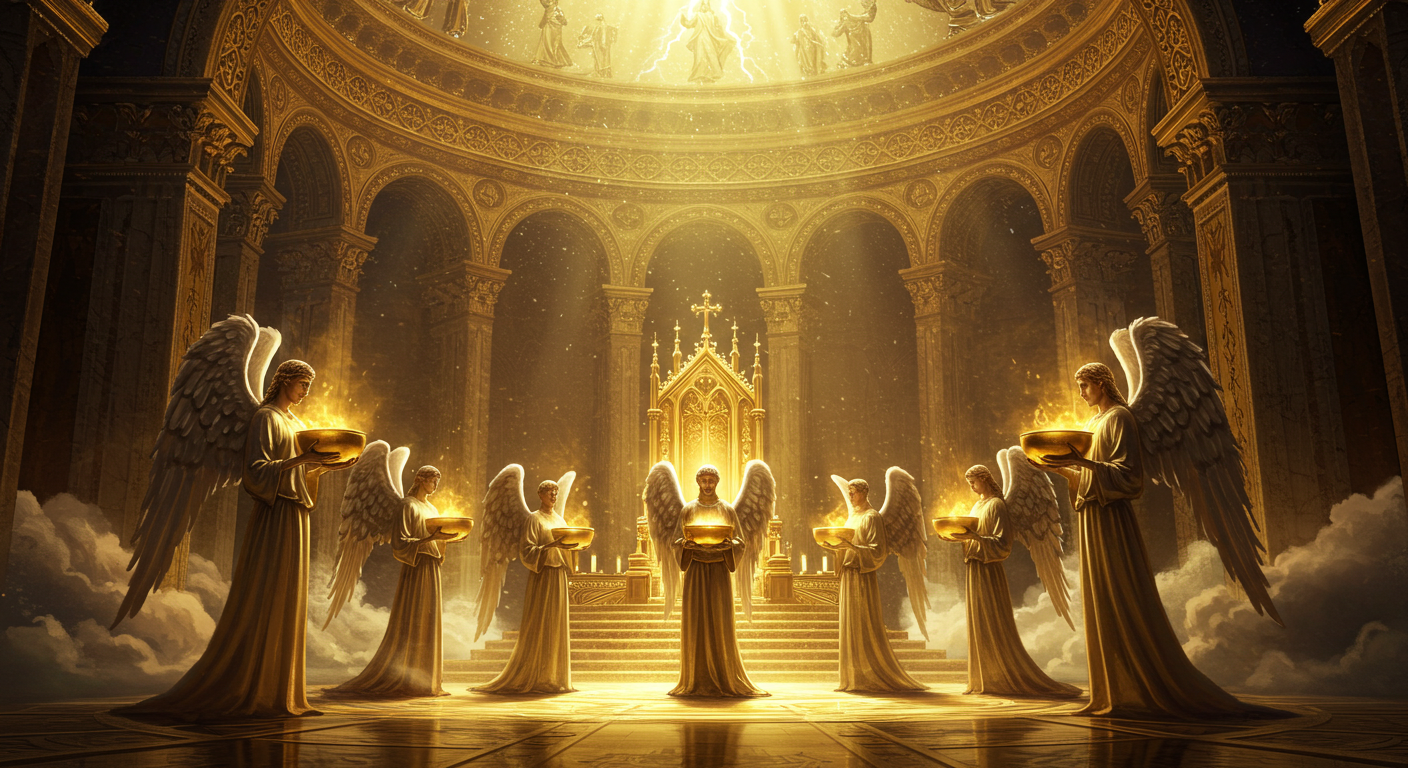
Understanding the Symbolism
The First Bowl: Painful Sores
The first bowl is poured, and those who bear the mark of the beast find themselves afflicted with painful sores. (Just thinking about it makes you shiver, right?) This symbolizes the physical consequences of following false teachings and abandoning divine truth. These sores aren’t just skin deep; they represent internal moral decay—damage that eventually manifests in one’s life.
This vivid imagery acts as a reminder that turning away from righteousness leads to suffering, urging you to introspect on your choices and beliefs. Perhaps it’s a call to establish your own principles based on love, hope, and truth, to avoid similar spiritual maladies.
The Second Bowl: The Sea Turns to Blood
Next, the sea—home to countless creatures and a symbol of abundance—turns to blood. This macabre transformation results in death for every living sea creature, reflecting the extensive repercussions of collective sin. It’s a stark reminder that actions have consequences, not only on a personal level but also on a communal scale.
Here, you see how essential it is for a society to adhere to core moral values. Abandonment of these virtues can result in catastrophic changes. As you read, it serves as a call to action for collective responsibility and environmental stewardship.
The Lament of the Living World
The Third Bowl: Rivers and Springs of Water
As the third bowl is poured, it hits closer to personal sustenance—a sobering moment as rivers and springs become blood. Imagine your water sources contaminated, the lifelines you depend on tainted. It underscores that continuous environmental and spiritual pollution results in the breakdown of life’s essentials.
This imagery urges reflection on your contribution to preservation, both spiritually and environmentally. The text is a clarion call to ensure that purity in intention and action remains clear. Think of it as nurturing your garden of life, ensuring it stays unpolluted and vibrant.
The Fourth Bowl: Scorching Heat
The scorching sun from the fourth bowl seems almost too much to bear, inflicting unbearable heat. Yet, despite this immense suffering, individuals do not repent. It serves as a harsh warning against the hardening of one’s heart in times of tribulation.
Perhaps here, you recognize the importance of remaining open to transformation. The heat, while punishing, also represents an opportunity to refine oneself—much like purifying gold in fire. You might ask yourself, when faced with trials, do you turn away or embrace growth?
The Unyielding Heart
The Fifth Bowl: Plunged into Darkness
As darkness envelops the beast’s kingdom with the fifth bowl, we see a kingdom lost without light, symbolizing the absence of guidance and hope. The poignant imagery serves as a reminder that rejecting illumination leads to confusion and despair.
Reflecting on this, you may consider how to avoid such pitfalls. Embrace sources of light, whether through relationships, knowledge, or spirituality. They provide guidance when navigating life’s inevitable shadows.
The Sixth Bowl: The Drying of the Euphrates
The drying up of the Euphrates to prepare the way for eastern kings could seem ominous or strategic depending on your perspective. This act of divine intervention readies you for a momentous confrontation, urging you to think about the preparedness for challenges in your own life.
Are you equipping yourself spiritually and emotionally, preparing for adversity with courage and resilience? It’s a powerful metaphor for foresight and readiness, knowing that under preparation can turn daunting challenges into opportunities.
The Climactic Battle
The Seventh Bowl: The Cataclysmic Earthquake
Finally, the seventh bowl culminates in a great earthquake—an upheaval so massive that cities fall, islands flee, and mountains vanish. It’s difficult not to be swept away by the epic imagery, imagining an era-ending shake-up that redefines everything known.
Symbolically, this upheaval represents a powerful transformation—a divine reset. It points out that sometimes, dismantling old structures is necessary for new growth. The end, as terrifying as it may seem, is also a new beginning, inviting renewal and reinvention.
Conclusion
In conclusion, the depth and complexity of Revelation 16 and the Seven Bowls of Wrath offer both caution and hope. They portray a transformational journey marked by divine justice, urging introspection and calling for an unwavering commitment to truth and righteousness. By exploring each bowl, not only do you gain insight into biblical prophecy, but also into the perennial truths about the human condition and the cyclical nature of transformation and redemption.
Perhaps, more than divine judgment, these verses serve as a roadmap for personal and communal reflection. They encourage not merely questioning and understanding prophecy but applying it as a lodestar guiding you through your moral and spiritual explorations.
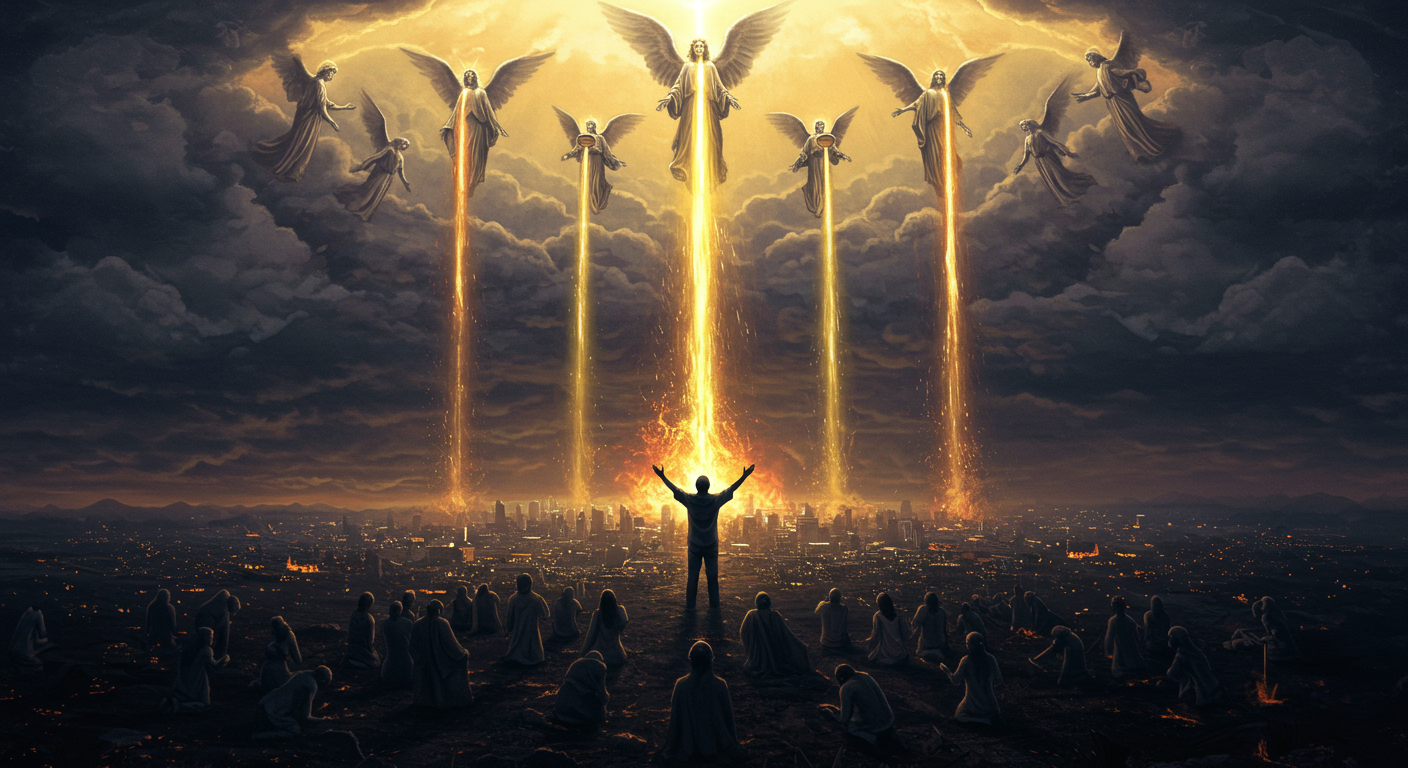
🔍 Explore More Bible Insights:
✅ 1. The Role of Eliab – David’s Brother in His Journey to Facing Goliath
Tone: Relational, reflective, character-focused
🔹 “Family Tensions and God’s Purpose – Discover the Connection”
Read it here.»
✅ 2. What Jeremiah 29:11 Means for Us Today
Tone: Hopeful, encouraging, life application
🔹 “God’s Plans Still Stand – Find Your Hope Here”
Read it here.»
✅ 3. The Wise and Foolish Builders – A Strong Foundation in Faith (Matthew 7:24-27)
Tone: Foundational, practical, discipleship
🔹 “Build Your Life on the Rock – Keep Learning”
Read it here.»
✅ 4. The Roman Centurion at the Cross – A Moment of Revelation
Tone: Awe-inspiring, redemptive, gospel-centered
🔹 “From Witness to Believer – Read His Revelation”
Read it here.»
As a ClickBank Affiliate, I earn from qualifying purchases.
Acknowledgment: All Bible verses referenced in this article were accessed via Bible Gateway (or Bible Hub).
“Want to explore more? Check out our latest post on Why Jesus? and discover the life-changing truth of the Gospel!”



